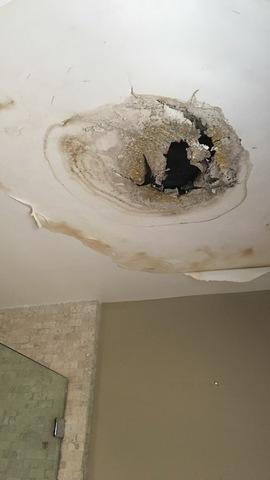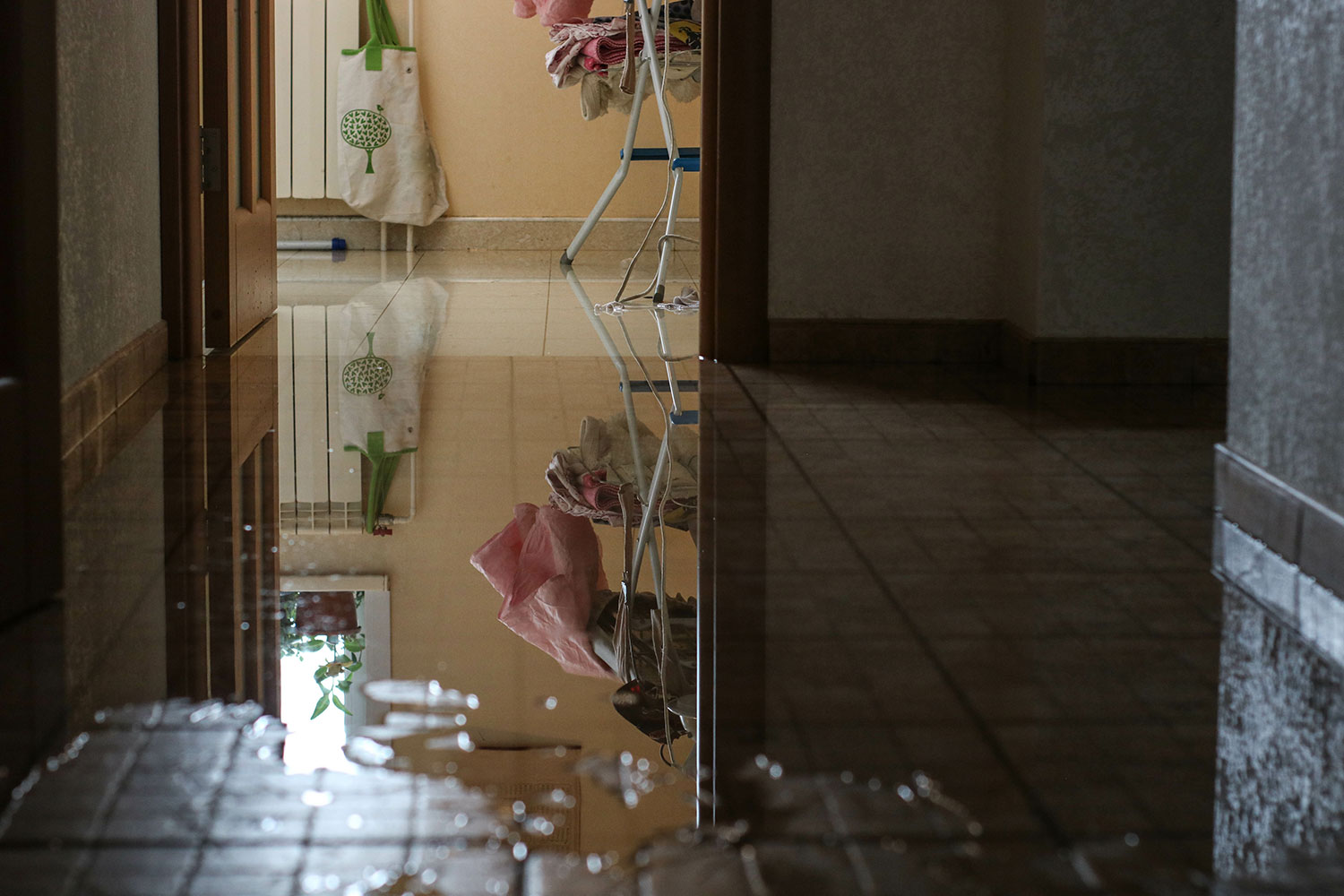What Leads to Water Deterioration in the Bathroom
What Leads to Water Deterioration in the Bathroom
Blog Article
This article following next in relation to How to Repair and Prevent Bathroom Water Damage? is immensely compelling. You should investigate for yourself.

Water damage frequently takes place in the washroom due to the water made use of everyday. In some cases, the damages could be a little mold from the shower. Other times, it's massive damages on your floor. Whatever it is, it is constantly good to know the reason and stop it prior to it happens.
This guide will undergo several of the usual causes of water damage in the shower room. We will also analyze what you can do to prevent these causes from damaging your bathroom. Let's dive in.
5 Typical Sources Of Water Damage in Bathrooms
These are the usual reasons you would have water damage in your bathrooms and how you can identify them:
Burst or Dripping Pipes
There are several pipelines carrying water to various parts of your washroom. Some pipes take water to the bathroom, the sink, the taps, the shower, and many other areas. They crisscross the little location of the bathroom.
Occasionally, these pipes might get rusty and also burst. Other times, human activity might create them to leakage. When this takes place, you'll find water in the corners of your shower room or on the wall.
To detect this, keep an eye out for gurgling walls, molds, or mold. Call a specialist emergency situation plumber to fix this when it happens.
Splits in your wall ceramic tilesv
Bathroom wall ceramic tiles have actually been specially made for that function. They secure the wall surface from wetness from people taking showers. Nonetheless, they are not undestroyable.
Sometimes, your washroom wall surface tiles crack as well as permit some wetness to leak right into the wall surface. This could potentially damage the wall if you don't take any action. If you see a crack on your wall tiles, repair it instantly. Do not wait till it ruins your wall surface.
Overflowing commodes as well as sinks
As humans, in some cases we make errors that can cause some water damage in the restroom. For example, leaving your sink faucet on could trigger overruning as well as damage to various other parts of the washroom with moisture.
Likewise, a malfunctioning commode might create overruning. As an example, a broken commode manage or various other parts of the cistern. When this happens, it can harm the flooring.
As quickly as you discover an overruning sink or toilet, call a plumbing technician to help take care of it right away.
Roofing Leakages
Often, the problem of water damage to the washroom might not come from the bathroom. For instance, a roofing system leakage could cause damage to the bathroom ceiling. You can identify the damages done by considering the water spots on the ceiling.
If you discover water discolorations on your ceiling, examine the roof to see if it's harmed. After that, call a professional to assist solve the problem.
Excess Moisture
It's amazing to have that lengthy shower and splash water while you hem and haw and also imitate you're performing, however in some cases these acts could create water damage to your restroom.
Sprinkling water around can trigger water to go to edges as well as develop molds. Enjoy how you spread excess moisture around, as well as when you do it, clean it up to stop damage.
Verdict
Water damage to your washroom can be annoying. Nevertheless, you can handle it if you protect against some of the reasons stated in this guide. Call a specialist emergency plumber if you notice any kind of severe damage.
How to Repair a Water-Damaged Wall in the Bathroom
All you need to know to repair bathroom wall water damage – from identifying the water source to finishing the repair professionally. If you don’t act quickly to resolve a water damage problem, you could find that it develops into a mold issue and/or cause structural damage to your home. Follow this guide to repair your bathroom before it's too late.
All you need to know to repair bathroom wall water damage
Water damage is a common household problem, and one that, if left unrepaired, can quickly lead to structural problems and health issues. The two most likely rooms where water damage may occur is the bathroom and the kitchen – where water is used often and there is high humidity.
What is water damage?
It is easy to think of water damage as caused by a flood or leaking tap or burst water pipe. However, when water damage is assessed, there are three main categories into which water falls (as classified by the American National Standards Institute). These categories are defined as:
Category 1 Water – ‘Clear Water’
This is sanitary water. There is usually no major threat to health by washing with this water, drinking it, or inhaling if it is streaming. Most water that enters your home will be category 1 water, while most water leaving your home will be either category 2 or 3 water. It may also come from melting snow, rainwater and water tanks.
Damage caused by this type of water can usually be repaired or restored, though this doesn’t mean that there are no potential health issues.
Category 2 Water – ‘Grey Water’
This is contaminated water – sometimes considerably so – and will cause illness if consumed or if it comes into contact with your skin. Water damage in this category is often caused by overflows from toilet bowls, and damage to washing machines and dishwashers. While damaged items might still be repaired or restored after damage by grey water, it is more difficult and more expensive to do so.
If the water damage in your home has been caused by grey water, it is advisable to have repairs made by professionals.
Over time, grey water will deteriorate and become black water.
Category 3 Water – ‘Black Water’
Category 3 water, also known as black water, is highly contaminated and a great risk to health. This may contain raw sewage, heavy metals, and other toxic substances. It will smell terrible.
If this is the water that has caused damage in your bathroom, do not touch it. Stop the water flowing if possible, seal the room and call the experts: it really isn’t worth the risk of ill health and disease that could be fatal. It is very unlikely that items can be repaired or restored if they have been damaged by black water.
https://www.porterscleaning.com/blog/how-to-repair-a-water-damaged-wall-in-the-bathroom/

How to Repair a Water-Damaged Wall in the Bathroom
All you need to know to repair bathroom wall water damage – from identifying the water source to finishing the repair professionally. If you don’t act quickly to resolve a water damage problem, you could find that it develops into a mold issue and/or cause structural damage to your home. Follow this guide to repair your bathroom before it's too late.
All you need to know to repair bathroom wall water damage
Water damage is a common household problem, and one that, if left unrepaired, can quickly lead to structural problems and health issues. The two most likely rooms where water damage may occur is the bathroom and the kitchen – where water is used often and there is high humidity.
What is water damage?
It is easy to think of water damage as caused by a flood or leaking tap or burst water pipe. However, when water damage is assessed, there are three main categories into which water falls (as classified by the American National Standards Institute). These categories are defined as:
Category 1 Water – ‘Clear Water’
This is sanitary water. There is usually no major threat to health by washing with this water, drinking it, or inhaling if it is streaming. Most water that enters your home will be category 1 water, while most water leaving your home will be either category 2 or 3 water. It may also come from melting snow, rainwater and water tanks.
Damage caused by this type of water can usually be repaired or restored, though this doesn’t mean that there are no potential health issues.
Category 2 Water – ‘Grey Water’
This is contaminated water – sometimes considerably so – and will cause illness if consumed or if it comes into contact with your skin. Water damage in this category is often caused by overflows from toilet bowls, and damage to washing machines and dishwashers. While damaged items might still be repaired or restored after damage by grey water, it is more difficult and more expensive to do so.
If the water damage in your home has been caused by grey water, it is advisable to have repairs made by professionals.
Over time, grey water will deteriorate and become black water.
Category 3 Water – ‘Black Water’
Category 3 water, also known as black water, is highly contaminated and a great risk to health. This may contain raw sewage, heavy metals, and other toxic substances. It will smell terrible.
If this is the water that has caused damage in your bathroom, do not touch it. Stop the water flowing if possible, seal the room and call the experts: it really isn’t worth the risk of ill health and disease that could be fatal. It is very unlikely that items can be repaired or restored if they have been damaged by black water.
https://www.porterscleaning.com/blog/how-to-repair-a-water-damaged-wall-in-the-bathroom/
Do you like more info about How to Repair and Prevent Bathroom Water Damage?? Write feedback directly below. We would be glad to listen to your views about this review. Hoping that you come back again in the future. Remember to take a moment to distribute this blog posting if you appreciated it. I praise you for your time. Kindly come by our website back soon.
Urgent plumbing issue? Connect now. Report this page